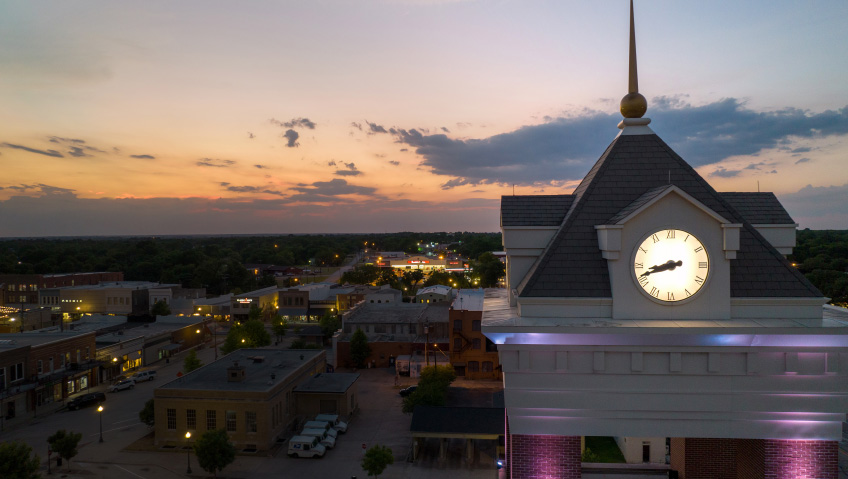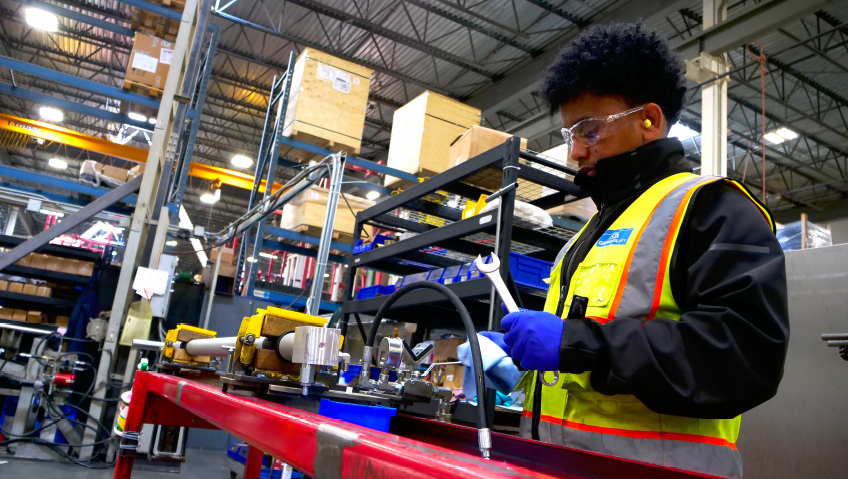In east central Texas in Grimes County, the historic city of Navasota has a well-earned reputation as a hub for entertainment, the arts, music, and more. Founded by railroad workers in 1854 and incorporated as a city in 1866, Navasota is known as The Blues Capital of Texas, and this dynamic city of over 8,400 has also become a popular place for entrepreneurs to launch and grow a business.
Located just 71 miles (114 km) northwest of Houston, Navasota provides many of the benefits of living in a big city but few of the headaches, like traffic congestion. With connections including Texas State Highway 105 passing east-west through the center of the city, Texas State Highway 6 running north-south, and the recently opened Texas State Highway 249 with a northern terminus just a few miles east of the city, Navasota is a city of easy access.
“That new corridor has generated a tremendous amount of traffic, and that’s what’s driving a lot of the commercial activity,” explains Development Services Director Lupe Diosdado. “A lot of those folks are heading up to Texas A&M University, especially during football season. That’s shown that the traffic counts in that area are way above what was projected.”
Even though Highway 249 only opened a few years ago, there are already plans to expand the buzzing 49.4-mile (79.5 km) roadway.
Open for business
Highly accessible and much less congested and expensive than Dallas-Fort Worth, San Antonio, or Austin, the City of Navasota has much to offer residents, visitors, and businesses alike. Along with its nearby interstate highways, Navasota has available land for development, a business park, and its famous historic downtown. Close to airports, colleges, and universities, Navasota boasts many perks, but without the steep price tag of other major centers.
“One of the big things for us is where we are positioned, between Houston and College Station,” comments Taylor Hughes, Marketing and Communications Manager/Public Information Officer. “We’re seeing lots of traffic coming to our town—traffic that goes into downtown as well, not just the major highways. Residential development is increasing, and we’re seeing lots of growth.”
Along with a growth in small, locally owned businesses, the city of Navasota is seeing an increase in larger companies coming to the area, including multinationals like Domino’s Pizza and coffeehouse chain Starbucks.
Railroad District
The city’s fabled historic downtown is known as the Railroad District, a nod to its 170-year-old heritage, which still hears the trains pass through daily. With the charm of its late 19th and early 20th-century architecture, the Railroad District is a popular place for locals and tourists alike.
Encompassing Navasota’s downtown central business district, a recently completed signage project included all-new street signs delineating where the regular town is versus the historic downtown. The project also includes a large monument sign with new branding. There is more work to be done, says Hughes, adding that the city is pursuing grants to support further streetscape improvements such as wider sidewalks, planter boxes, and decorative lighting. Everything in the area is booming, with Hughes and Diosdado expecting the remaining work to be completed in the next two to five years.
Navasota also boasts several landmark spots, including the legendary P.A. Smith Hotel. Originally built in 1876, the limestone structure was one of the first buildings along the railroad tracks. Historically speaking, the building served as a hotel for just 14 years and then became a residence for its namesake, teacher and businessman Phillip Aurene Smith, who also constructed and managed the Navasota Opera House. Surviving a major fire, a caved-in roof, multiple owners, and various attempts to resurrect the property, it remained abandoned until 2017.
The building was purchased by husband-and-wife Stephen and Janice Scheve, and the couple lovingly oversaw the revitalization of the 148-year-old hotel, which had fallen into disrepair. Five years of renovation later, the building is now an AAA four-diamond hotel combining vintage décor and finishes with up-to-date technology for its guests. “The hotel’s been completely renovated inside, with guestrooms, event space, a speakeasy bar, restaurant, coffee shop—all of those elements,” says Hughes.
The move also signaled the confidence of the Scheves, who invested a sizable amount and over four years of their lives into the project. Stephen and Janice represent two of many business investors who spotted and acted on the potential of the city of Navasota, its charm, and its many enduring qualities.
Speaking of speakeasies
One of the city’s most notable spots, hidden on the second floor of the P.A. Smith Hotel, is Hamer’s Speakeasy. The bar is named in honor of legendary Texas lawman and ranger Frank Hamer, who led the posse that tracked and killed outlaws Bonnie Parker and Clyde Barrow in 1934.
Cleverly hidden behind a sign stating, “Dr. Wilson’s Office,” Hamer’s Speakeasy is steeped in Prohibitionist-Era décor, and famous for its smoked old fashioneds, legendary whiskeys, and timeless cocktails.
Located at 111 S. Railroad St., the hotel is near the Red Board Tavern & Table at 117 S. Railroad St. Renowned for its scratch-made American dishes crafted with a French influence, Red Board “provides a gourmet casual experience,” and a lengthy wine list, and is open for breakfast, lunch, and dinner.
The P.A. Smith Hotel, Hamer’s Speakeasy, and the Red Board not only serve as testaments to Navasota’s enduring history, but also to its future.
Driven by growth
The city is also experiencing an increase in retail businesses and restaurants, and recently welcomed a new Jack in the Box restaurant along Highway 105. One of the many reasons for this growth is the large number of residential lots for single-family homes that have been recently planned (more than a thousand), are under discussion, or will be constructed shortly.
For research-based businesses, manufacturers, and technology-focused companies, the city is also home to the Navasota Business Park. One of the key companies in the area is Heat Transfer Research, Inc. (HTRI), a worldwide leader in process heat transfer research, technology, services, and software for the oil, gas, and petrochemical industries. And with its proximity to key universities like Texas A&M, Sam Houston State University, and more, the city is poised to attract complementary research, development, and tech companies.
Whether it’s exploring the iconic Railroad District, discovering the carefully restored P.A. Smith Hotel, or enjoying new restaurants and retail spaces, Navasota offers a vibrant and inviting atmosphere. As the city continues to balance historic charm with modern growth, it stands out as a unique blend of small-town hospitality and entrepreneurial opportunity. Its accessibility, ongoing development, and rich cultural history draw residents, businesses, and visitors alike to experience its evolving story.
With its sights set on sustainable expansion and community enrichment, Navasota is well-positioned for a bright future as a Texas city where tradition and innovation meet.






